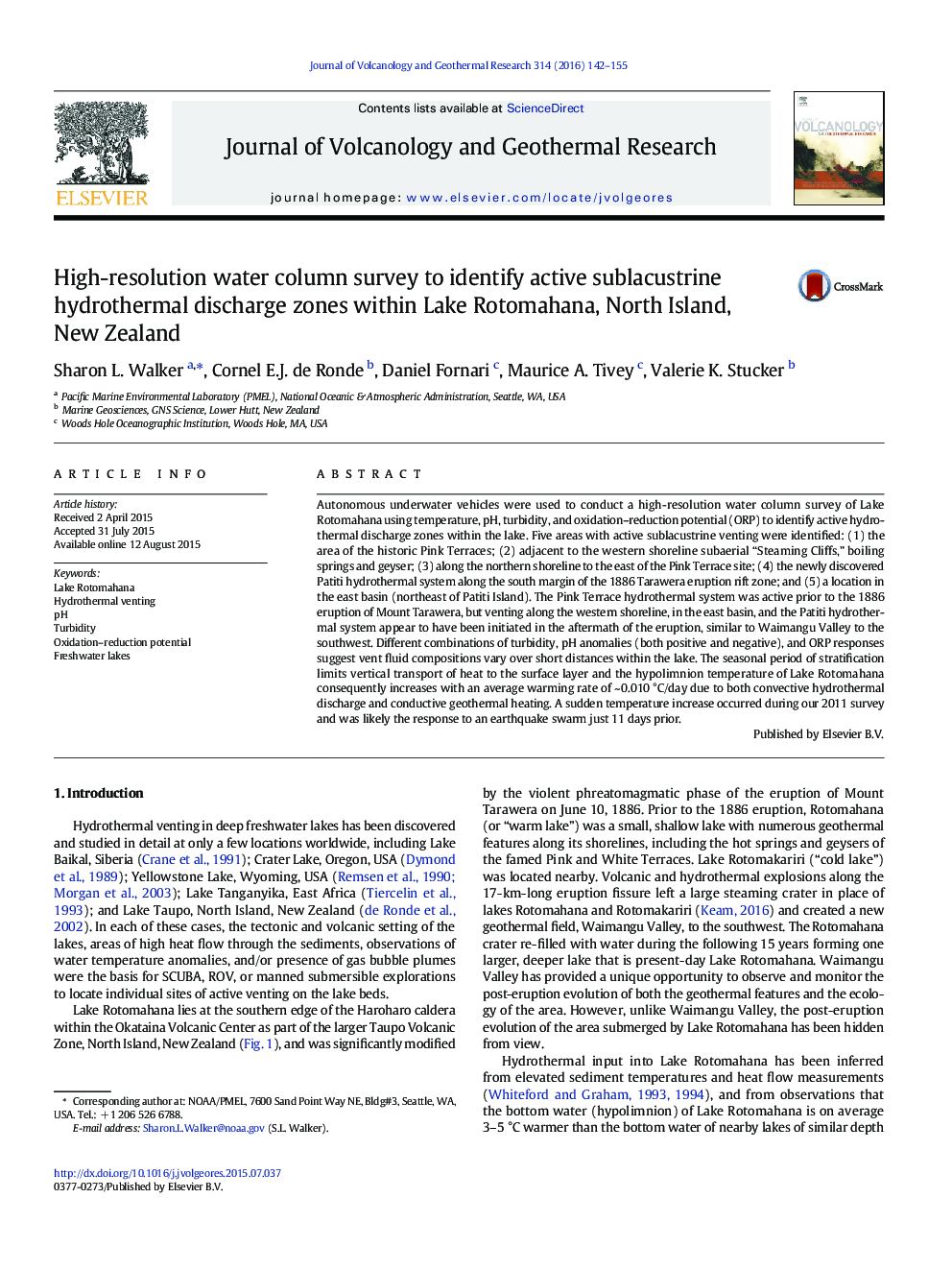| کد مقاله | کد نشریه | سال انتشار | مقاله انگلیسی | نسخه تمام متن |
|---|---|---|---|---|
| 4713011 | 1638308 | 2016 | 14 صفحه PDF | دانلود رایگان |

• Five zones of active hydrothermal venting were located beneath Lake Rotomahana.
• Active venting continues at historic location of Pink Terraces, plus 4 new areas.
• Temperature, pH, ORP, and turbidity anomalies at sites vary over short distances.
• Sites are correlated with high conductive heat flux, bubble plumes, and basalt dikes.
• The lake received a sudden pulse of excess heat in response to an earthquake swarm.
Autonomous underwater vehicles were used to conduct a high-resolution water column survey of Lake Rotomahana using temperature, pH, turbidity, and oxidation–reduction potential (ORP) to identify active hydrothermal discharge zones within the lake. Five areas with active sublacustrine venting were identified: (1) the area of the historic Pink Terraces; (2) adjacent to the western shoreline subaerial “Steaming Cliffs,” boiling springs and geyser; (3) along the northern shoreline to the east of the Pink Terrace site; (4) the newly discovered Patiti hydrothermal system along the south margin of the 1886 Tarawera eruption rift zone; and (5) a location in the east basin (northeast of Patiti Island). The Pink Terrace hydrothermal system was active prior to the 1886 eruption of Mount Tarawera, but venting along the western shoreline, in the east basin, and the Patiti hydrothermal system appear to have been initiated in the aftermath of the eruption, similar to Waimangu Valley to the southwest. Different combinations of turbidity, pH anomalies (both positive and negative), and ORP responses suggest vent fluid compositions vary over short distances within the lake. The seasonal period of stratification limits vertical transport of heat to the surface layer and the hypolimnion temperature of Lake Rotomahana consequently increases with an average warming rate of ~ 0.010 °C/day due to both convective hydrothermal discharge and conductive geothermal heating. A sudden temperature increase occurred during our 2011 survey and was likely the response to an earthquake swarm just 11 days prior.
Journal: Journal of Volcanology and Geothermal Research - Volume 314, 15 March 2016, Pages 142–155